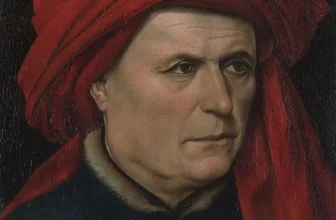Meaning of People in the Sun Painting by Edward Hopper
Edward Hopper (1882–1967), one of the most influential American realist painters of the 20th century, is best known for his stark, emotionally resonant portrayals of American life. His works are often characterized by their lonely figures, dramatic use of light and shadow, and contemplative atmosphere. Hopper’s paintings reflect a distinct psychological depth, capturing not just scenes but states of mind. Among his later works, People in the Sun (1960) is a particularly enigmatic and evocative painting that continues to inspire interpretation and analysis.
People in the Sun stands out within Hopper’s oeuvre as a masterful exploration of isolation amid togetherness, stillness in leisure, and the paradoxes of modern existence. It merges his recurring themes, alienation, urban disconnection, and the search for meaning, with a unique setting and visual style that invites both emotional and intellectual engagement.
A Description of the Painting: What Do We See?
People in the Sun depicts five individuals sitting on wooden deck chairs on what appears to be a terrace or veranda, gazing toward the sunlit landscape outside the picture’s frame. The setting is likely the patio of a resort or a sanatorium in a desert or mountainous area, an arid, possibly Southwestern, American location, suggested by the warm, golden light and the minimalistic landscape visible through a series of tall windows or doorways behind the figures.
Each person is dressed in summer clothing: short sleeves, light dresses, and slacks. The figures appear still, detached, and introspective. The composition is spare, almost clinical, with very little extraneous detail. The architectural lines are clean, modernist, and geometrically rigid. The sunlight streams in at a sharp angle, casting hard-edged shadows that further accentuate the composition’s static, staged feel.
How and When People in the Sun Was Painted
Edward Hopper painted People in the Sun in 1960, near the end of his career. By this time, Hopper had long established his signature style and thematic concerns. He painted it in his studio in New York, drawing inspiration from his frequent travels to the American West and Southwest with his wife, Josephine (Jo) Nivison Hopper, who was also a painter and often posed as a model for his work.
The painting likely drew on his observations during their travels to places like New Mexico and California. The Hopper couple often stayed in hotels and observed guests in quiet, mundane moments, eating, sitting, reading, or simply staring. These passive behaviors fascinated Hopper, who interpreted them as reflections of the inner emotional states of modern Americans.
People in the Sun was executed in oil on canvas, using Hopper’s characteristic muted palette, precise brushwork, and intense attention to light. The figures are carefully spaced, and the overall effect is one of orchestration, a careful staging of a moment suspended in time.
What Is Happening in the People in the Sun Painting?
At first glance, it appears to be a tranquil scene of vacationers basking in sunlight. However, upon closer inspection, the atmosphere is anything but relaxed. Despite the shared activity, sunbathing, there is no interaction among the individuals. Each person seems deeply absorbed in their own thoughts or simply blankly gazing. The man at the far left is reading a newspaper, perhaps suggesting a connection to the external world, but the others are locked in contemplation or emptiness.
The painting captures a moment of collective solitude. Even though the individuals are physically near one another, they seem emotionally and psychologically distant. There’s a sense of disconnection, of spiritual vacancy, that permeates the scene. The figures appear as if they are caught in a meditative limbo, present, but not truly alive in the moment.
Hopper’s use of architecture enhances this mood. The severe lines of the veranda and windows create a cage-like effect, enclosing the figures in a geometric prison of light and shadow. The sunlight, usually a symbol of vitality and warmth, in Hopper’s hands becomes harsh and clinical, illuminating their stillness rather than enlivening them.
What Does the People in the Sun Painting Represent?
The symbolism of People in the Sun is multilayered, and various interpretations are possible:
1. The Illusion of Leisure
The figures are ostensibly enjoying leisure time, yet none appear relaxed. This may reflect Hopper’s skepticism about the promises of modernity and affluence, that vacations, comfort, and material stability do not necessarily lead to happiness or inner peace.
2. Disconnection in Modern Life
Though sitting together, the figures are isolated in their own mental worlds. This echoes the modernist theme of urban alienation and the breakdown of community and genuine human connection. Hopper captures the existential loneliness of people surrounded by others yet fundamentally alone.
3. The Sun as a Symbol of Judgment or Revelation
The sun might be interpreted not only as a natural element but also as a metaphorical presence, a kind of all-seeing force that exposes the truth of human existence. Instead of invigorating the figures, the sunlight reveals their passivity and emptiness. In this reading, the sun becomes a cold, impersonal eye, highlighting the futility of their attempts at relaxation or escape.
4. Staged Ritual or Theatre
The composition’s careful geometry and symmetrical arrangement can suggest a kind of theatrical performance, figures arranged like actors on a stage. But in this “drama,” nothing happens. This may reflect the repetitive, scripted nature of modern routines and rituals, devoid of spontaneity or true meaning.
5. Death and Stillness
Some viewers have read People in the Sun as a subtle meditation on mortality. The figures’ stillness, the almost tomb-like architecture, and the sterile sunlight evoke a timeless, almost post-human atmosphere. It’s as if time has stopped or no longer matters. In this reading, Hopper is reflecting on the inevitable stillness of life approaching death, a sun not of life but of the afterlife.
What Type of Art is It?
People in the Sun belongs to the American Realist tradition but also intersects with elements of Modernism and Symbolism. Hopper’s realism is never purely documentary, it is stylized, interpretive, and psychologically charged. His figures are not just people; they are archetypes, expressions of broader truths about life, time, and identity.
The painting also shows elements of minimalism in its sparse composition and existentialism in its themes. Hopper’s work is cinematic, his compositions influenced (and were influenced by) photography and film. Directors like Alfred Hitchcock, Wim Wenders, and David Lynch have acknowledged Hopper’s influence on their visual storytelling, particularly in scenes of emotional and narrative ambiguity.
Color, Light, and Composition
The use of light in People in the Sun is central to its meaning. The sunlight streams in from the right, casting elongated shadows and bisecting the room with precise geometry. Light in Hopper’s work often has paradoxical qualities: it is both illuminating and oppressive, natural and unnatural.
Color plays a subtle but essential role. The subdued palette, earth tones, pale skin, washed-out clothing, evokes a drained, desaturated emotional world. The arid landscape visible through the windows emphasizes emptiness and detachment from nature. The figures’ clothes blend with their surroundings, suggesting a loss of individuality and vitality.
The composition is rigid and almost architectural. The vertical lines of the windows contrast with the horizontal slouch of the figures. This conflict between freedom (open windows, sunlight) and entrapment (immobile figures, confining architecture) is crucial to the painting’s emotional tension.
Who Are the People in the Painting?
Hopper rarely based his figures on specific individuals, his characters are often composites or entirely imagined. However, it’s widely believed that the female figure seated second from the left may have been modeled after Jo Hopper, his wife, as she posed for many of his works.
The people in People in the Sun are anonymous and without clear backstories. They are types rather than personalities: the reader, the observer, the dreamer, the cynic. This abstraction invites viewers to project themselves into the scene, turning the painting into a kind of mirror for the viewer’s own existential condition.
Cultural Impact
Though not as immediately iconic as Nighthawks or Automat, People in the Sun has earned critical acclaim for its emotional subtlety and psychological complexity. It has been cited in academic discussions of American identity, postwar alienation, and the aesthetics of stillness.
Its influence extends to photography, cinema, literature, and theater. The image of people frozen in a moment of inaction has resonated with artists exploring the quiet desperation of modern life. It remains a subject of frequent analysis in art history and philosophy courses, often discussed alongside existentialist literature and mid-century critiques of consumer culture.
Where is People in the Sun Painting Today?
People in the Sun is housed in the Smithsonian American Art Museum in Washington, D.C. It is part of the museum’s permanent collection and is occasionally displayed in exhibitions focused on American modernism, Hopper’s career, or themes of light and space in American painting.
The painting is typically well-preserved, and when on display, it is accompanied by interpretive materials that discuss its context within Hopper’s body of work and its cultural relevance.
A Painting That Captures the Stillness of Being
People in the Sun is a quiet but powerful meditation on the modern condition. It’s not a scene of active narrative but a tableau of inner life, frozen, fragmented, and faintly melancholic. Hopper invites us to look beyond what is happening on the surface and ask deeper questions: What does it mean to be truly present? Can we ever escape from our own thoughts? Is sunlight warmth or exposure, liberation or judgment?
Through his precise use of composition, light, and human posture, Hopper achieves a painting that speaks volumes in its silence. People in the Sun is not just a picture of people sitting in chairs, it is an image of humanity in contemplation, caught between nature and architecture, presence and absence, individuality and anonymity. It is a work that continues to speak to viewers decades after its creation, reminding us of art’s power to capture the still, quiet truths of existence.




